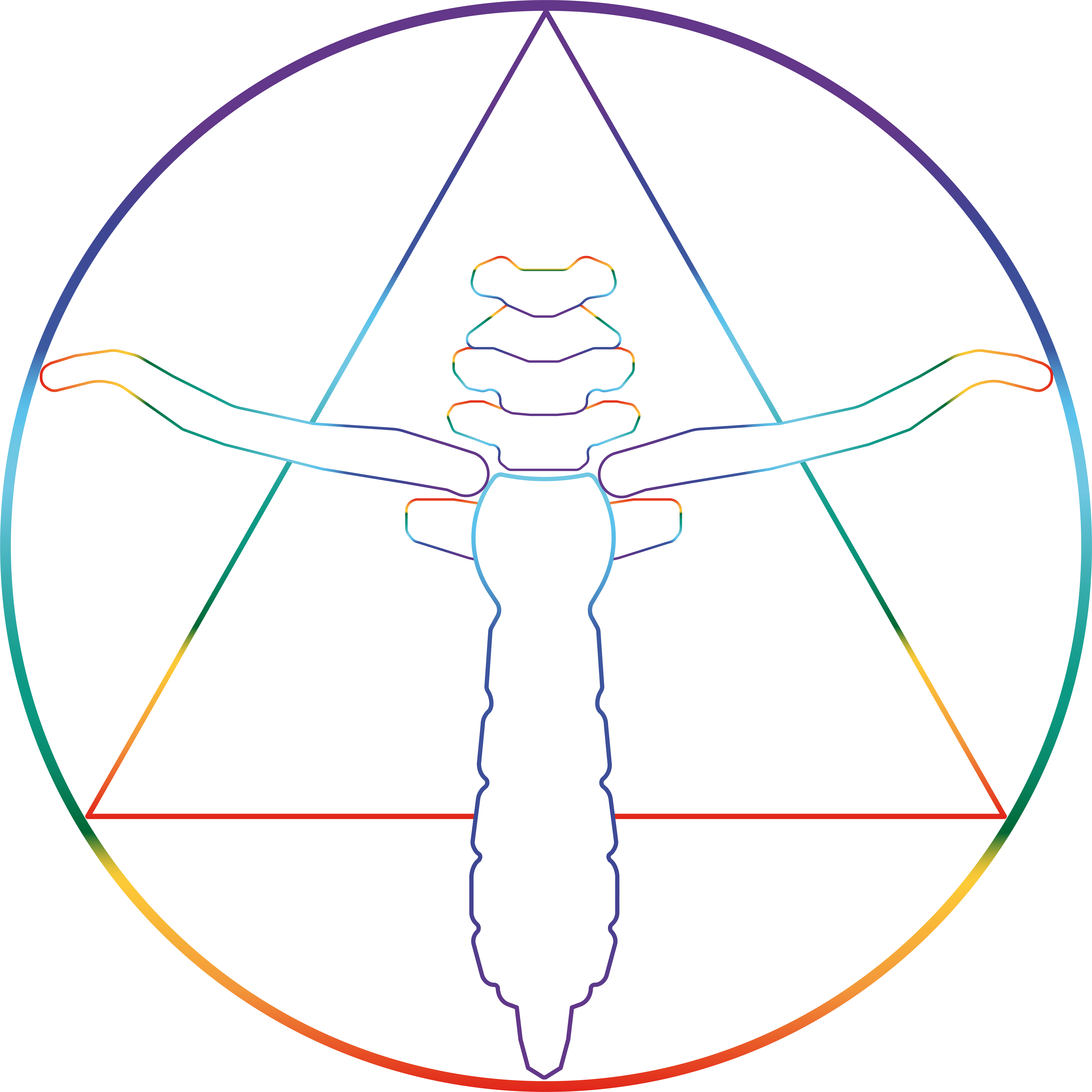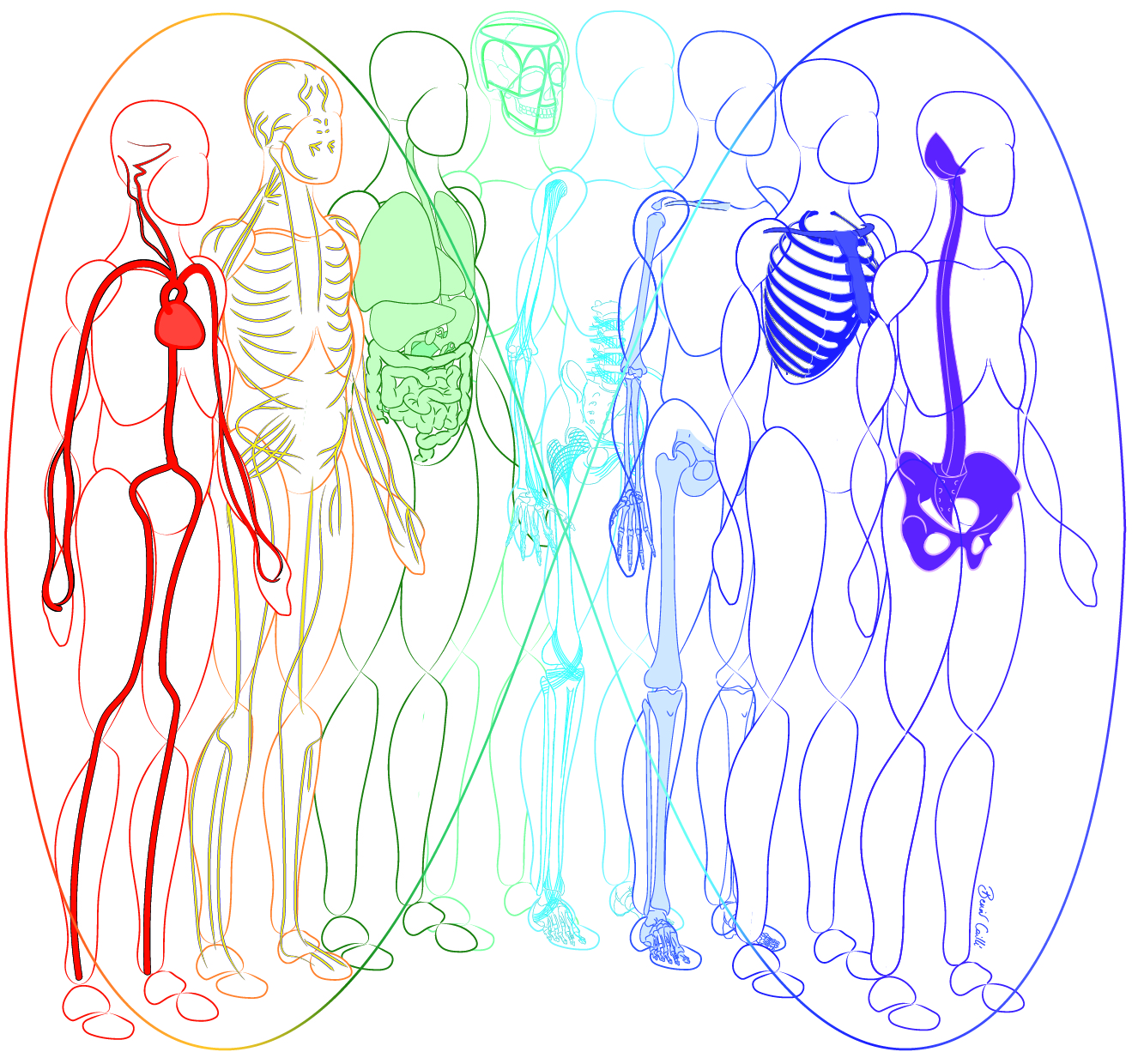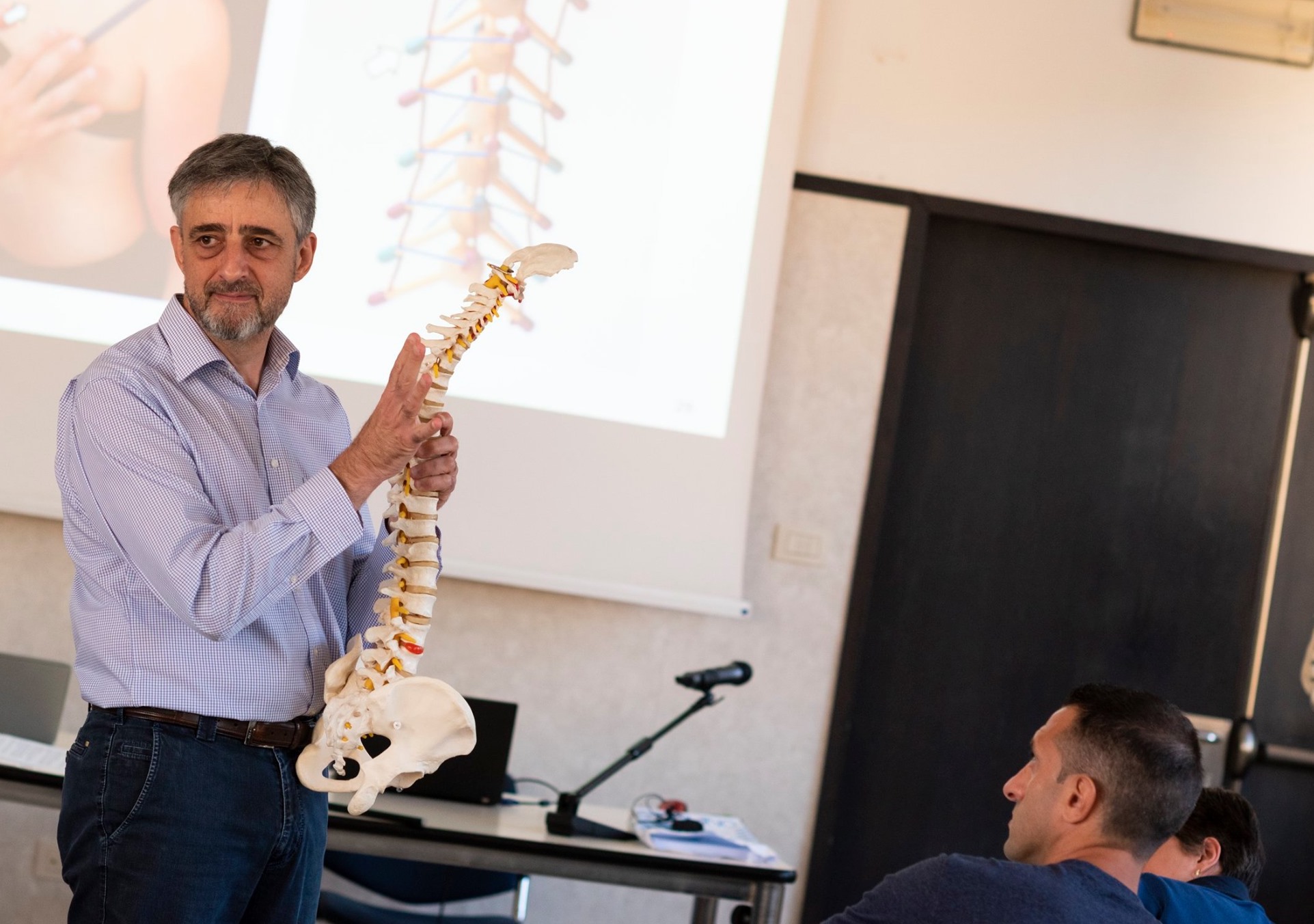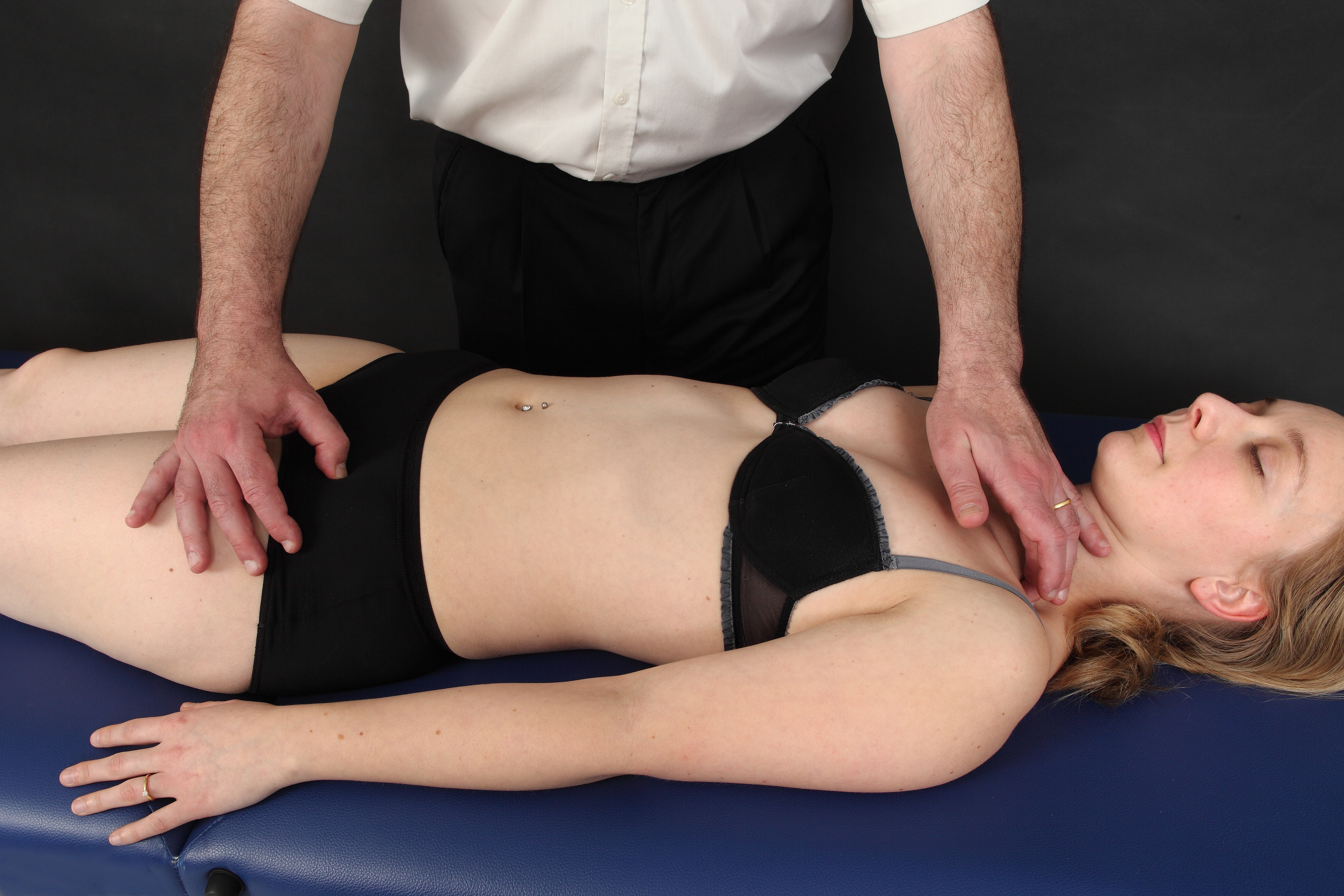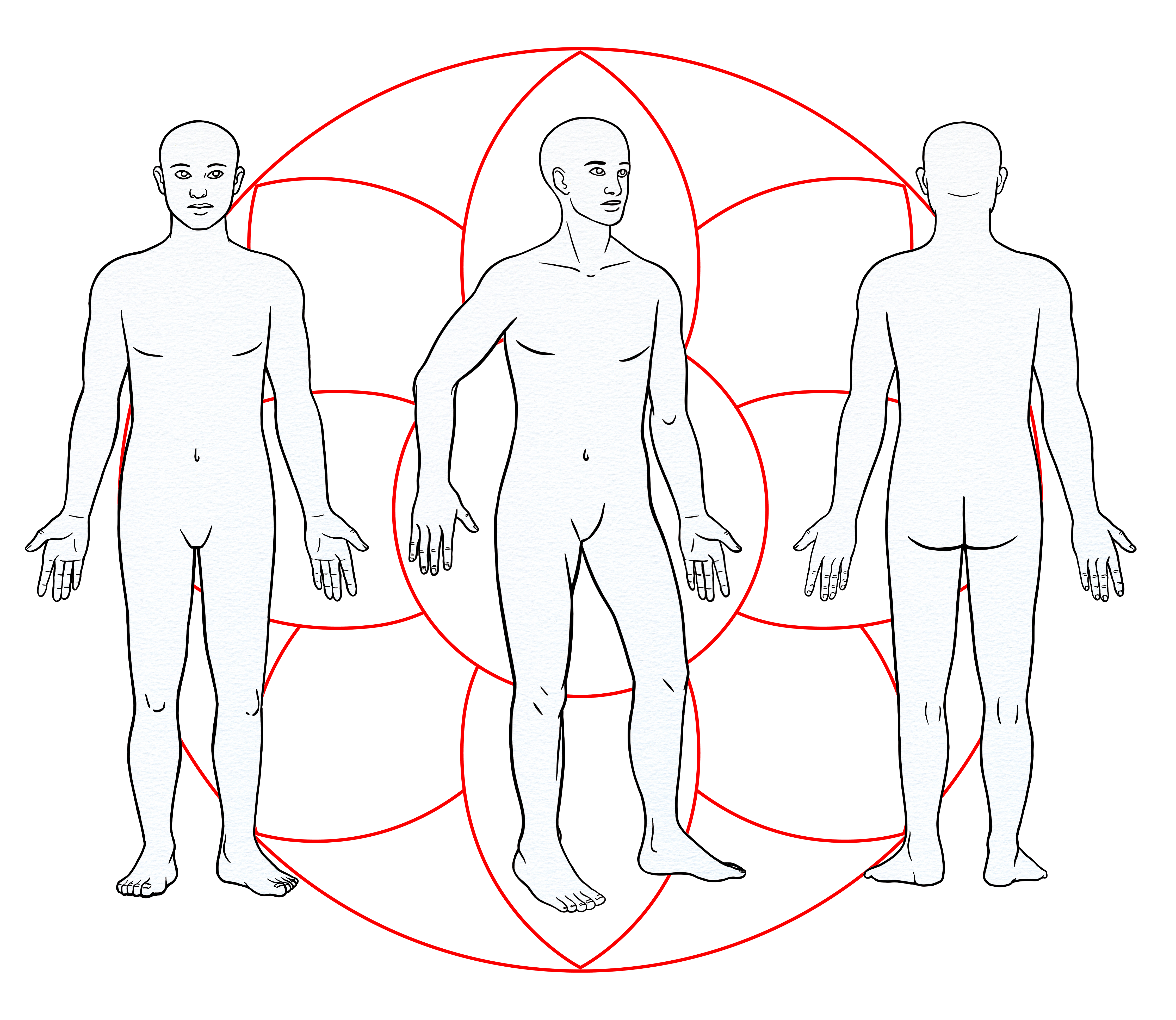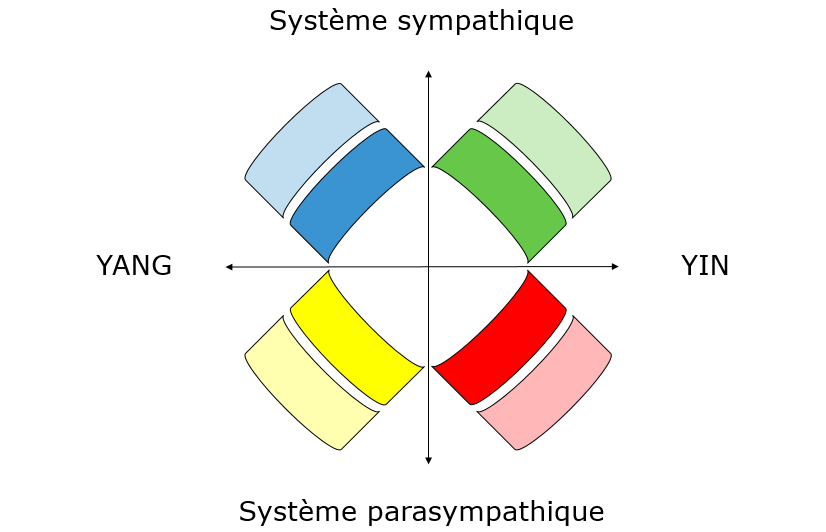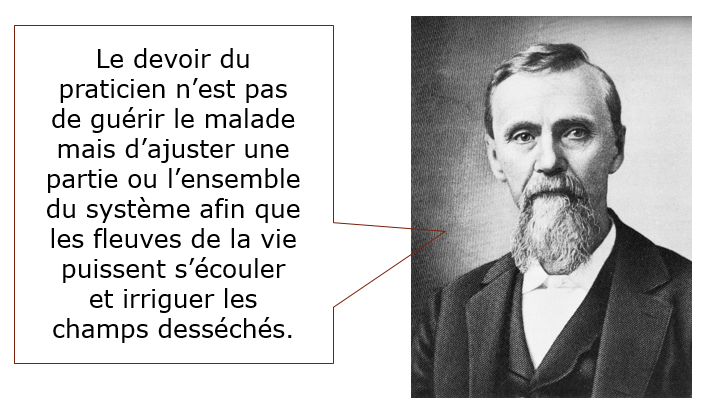From an osteopathic point of view, each Extraordinary Vessel could be described with the following characteristics
1. An opening point (or master point) used both for diagnosis (control point) and for treatment (command point).
2. A complementary point, coupled with the previous one, in order to strengthen its action.
3. A main pathway with secondary branches.
4. Key points to investigate, because they are susceptible to present osteopathic lesions along the EOV’s pathway.
5. Warning signs, symptoms most often encountered in case of dysfunctions.
6. A specific morphotype, revealing à dominant EOV[1], as far as we always find the same pair of points over time.
In this article, we will present an anatomical and clinical study of the Extraordinary Vessels that regulate the sympathetic system (EOV1).
[1]We are aware that the concept of morphotype remains questionable and would require a real study. It serves here as an “educational caricature” to illustrate the dominance of an EOV. Observing a patient’s morphotype requires nuance and should not be considered an essential element of the diagnosis. A presentation of the psychological profil (temperament and character) attributed to each EOV would be beneficial but this would go beyond the limited scope of this chapter.















